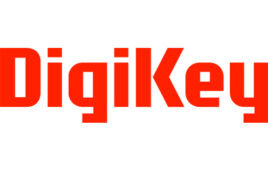By John R. Gyorki, Editorial Director
Although modern technologies have made more scientific and technical information quickly available, it has also become the Trojan horse of information overload. As many of you have undoubtedly discovered, the essential information you require might be embedded in databases that are difficult to find, and the needed and accurate data are often difficult to retrieve. The following suggestions are intended to help you streamline the information search and retrieval process by selecting the right tools and adapting the searching process to your own work-style.

Frequently, you need to search for information in response to a specific problem or project requirement. The problems are usually immediate, so the information is also needed immediately. And because you know exactly what you want, you generally like to help yourself to a convenient source. Most often, to shortcut the search, you would rather use colleagues or the Internet as a resource instead of searching a special library.
However, even though you are usually comfortable with on-line sources of information, books (especially textbooks) are considered more reliable reference sources. When it comes to trade magazines and specialized journals, you may prefer remote access to electronic format: many of the articles you read are electronic. Also, many of your online searches do not necessarily target corporate library databases, but rather, you prefer to let Google find the sources.
Limitations of “Googlization”
Unfortunately, while “Googling,” you often come across inaccurate information, numerous outdated pages, and broken links. Superficial searches on Google or Wikipedia will bring results that are often just that—superficial. Google is indeed a great resource: it is the largest search database with about eight billion Web pages. However, no one can ever be sure that the data-producing sources are authoritative or accurate.
Specialized information seekers have to be aware that Google indexes only the so-called visible Web, compared with the invisible or “deep Web” that is estimated to be 500 times bigger that what Google or other general-purpose search engines can access. In addition, quality of data found by searching the invisible or deep Web is considerably better than data found on the surface Web, and the majority of that data are publicly accessible and free. What you have to keep in mind is that for specialized information you need to go to sources of authoritative nature.
To help you find this “hidden” information, we review several scientific and technical information searching resources. It is essential to remember that no guide can offer a “one-size-fits-all” solution: some requests could be easily met by searching Google Scholar or even Google, and some may require ordering a search from an information specialist.
Google Scholar and Scirus
When a quick search on Google does not bring adequate information, more specialized search engines, such as Google Scholar (http://scholar.google.com) or Scirus (http://www.scirus.com) should be considered. Serviced by Google and not related to a fee-based SciFinder Scholar (American Chemical Society), Google Scholar provides a simple way to broadly search for scholarly literature. It helps users identify the most relevant information across the world of scholarly research. Users can search across many disciplines and sources: peer-reviewed papers, theses, books, abstracts and articles, academic publishers, professional societies, preprint repositories, universities, and other scholarly organizations.
Scirus, on the other hand, offers functions specifically designed for you and researchers. It is considered the most comprehensive science-specific search engine on the Internet. It searches over 450 million science-specific Web pages, which lets users search for scientific, scholarly, technical, and medical data. You can find the latest reports, peer-reviewed articles, patents, pre-prints and journals that other search engines often miss.
Going Deeper – Deep Web Search Engines
Developed by the search software company Vivisimo, Clusty (http://clusty.com) is a metasearch engine that combines the results of several top search engines. Clusty queries these search engines, combines the results, and generates an ordered list based on comparative ranking. It groups results together into clusters that help users see the search results by topic and to zero in on exactly what the user is looking for, or discover unexpected relationships between items.
Another science, engineering, and technology hub, Intute (http://www.intute.ac.uk/sciences) was developed in the UK. It is a free search engine that provides access to specialized Web resources (e.g., science, technology, and engineering) that were selected and evaluated by subject experts. Users can select the heading (e.g., electronic engineering, chemical engineering) and search by specific terms.
Turbo 10 (http://turbo10.com/) and TechXtra (http://www.techxtra.ac.uk) are two more examples of search engines developed in UK. Turbo 10 is an award-winning metasearch engine and “pay-per-click” search-advertising network. It searches the deep or invisible net, a vast array of specialist databases that are inaccessible to traditional crawler-based engines like Google.
TechXtra is a free service which covers areas such as engineering, mathematics, and computing and helps users locate articles, books, the best Websites, the latest industry news, job announcements, technical reports, technical data, full text e-prints, the latest research, thesis and dissertations. TechXtra searches four million items from 31 top sources on the “invisible” Web that Google does not search. In many cases, full-text is available.
A different approach is offered by Scitopia (http://www.scitopia.org), a federated vertical search portal that allows a simultaneous search of multiple online databases. It was created by 21 leading science and technology societies and serves as a gateway to the research most cited in technical and scholarly work and patents. Scitopia searches the entire electronic libraries of the leading voices in major science and technology disciplines and provides access to 3.5 million documents, including peer-reviewed journal content and technical conference papers.
Open Access Journals
The Directory of Open Access Journals or DOAJ (http://www.doaj.org) is an online directory that covers over 3,000 free, full-text, scientific, scholarly and technical journals with about half of them searchable on the article level. Users can search by subject area, by journal, and by article.
Open J-Gate (http://www.openj-gate.com) is an electronic gateway to global journal literature in open-access domain. It provides seamless access to millions of journal articles available online. It is also a database of journal literature, indexed from more than 4000 open-access journals, with links to full text at publisher sites. Users can do a free-word subject or term search or a search by Title, Author, Abstract, Author’s Address/Institution, or Keywords in professional, industry, and trade publications.
Owned and operated by American Institute of Physics or AIP, Scitation (http://scitation.aip.org) provides services to the scholarly and technical community under AIP leadership. It covers over 600,000 journal articles, conference proceedings, standards, online portal sites, and so on. There are no subscriptions to Scitation itself, but users can become subscribers to publications and services hosted on Scitation.
RSS & Blogs
Current Awareness Services – RSS: The current trend is that increasingly more engineers and scientists use RSS (Real Simple Syndication) as a news delivery mechanism. RSS lets users retrieve the latest content from the sites they are interested in without visiting each site individually. Users get their targeted content when they need it without overloading their mail boxes with numerous electronic newsletters and alerts.
The number of sites that syndicate content and offer RSS feeds is growing rapidly and includes big names such as Yahoo News and Google News. Feed Reader or News Aggregator software lets users access the RSS feeds from various sites and display them at their own sites or portals. There are also a number of Web-based feed readers available, such as My Yahoo, Google Reader, and Bloglines.
Blogs: You are not a lone researcher; find a Blog. The chances are that somebody else in your field is or was faced with a similar problem. Finding the right type of a Blog is like coming across a hub of information that cannot be easily found anywhere else. Blogs bring content expertise and passion about issues together: Authors and readers participate in discussions and exchanges of knowledge and ideas.
You can use Google Blog Search (http://blogsearch.google.com) to find either specific posts dealing with specific issues or entire blogs. Blog Search indexes blogs by their site feeds that are checked frequently for new content. Blog Search results for a given blog are updated with new content much faster than standard Web searches. Due to the structured data within site feeds, it is possible to find precise posts and date ranges with much greater accuracy.
Prime content: Subscription/fee-based
If all free searches did not yield the needed information, it’s time to ask your boss for some money. Fee-based sites offer access to research data not available or difficult to obtain for free.
One such site, Engineering Village (http://www.engineeringvillage.com), is the premier Web-based discovery platform that meets the information needs of the engineering community. It is a globally accepted source of choice for you, engineering students, researchers and information professionals. By combining powerful search tools, an intuitive user interface and essential content sources, Engineering Village provides access to today’s most important engineering databases, such as Compendex, Engineering Index Backfile, Inspec, and NTIS.
Another premier subscription source for scientific, technological and engineering information, ScienceDirect (http://www.sciencedirect.com), features the largest single collection of 2,500 electronic journals and over 6,000 books.
A library at home
Search a library of tens of thousands of books, without leaving your office. Modern technology lets you visit “libraries” without leaving your desk. For example, Ebrary (http://www.ebrary.com) a leading e-content services and technology provider has been serving the library, publishing, and
corporate markets since 1999 with a searchable database of more than 20,000 full-text books. Ebrary has developed a sophisticated e-content platform that can be used in a number of capacities: subscribing to databases of e-content, custom data collection, or both. Additionally, Ebrary allows user to distribute their own PDF content online under a variety of business models.
Another option is Knovel (http://www.knovel.com), an interactive online scientific and technical reference library with a specialized collection of the world’s leading references.
It provides subscribers with access to close to 2,000 leading reference works and databases from over 40 international publishers and professional societies through a single interface. Knovel is widely used by applied scientists and many practicing engineers around the world to quickly locate relevant and reliable technical information. It is very user-friendly and lets users browse by subjects, titles, or authors.

Company and product information
Several sources focus on business data. Harris InfoSource, a D&B company (http://www.harrisinfo.com/harrisinfo), offers a global database that features a total of 23 million records including all businesses in the U.S. and Canada, and international firms in markets such as Asia-Pacific, Europe, and Latin America. Harris offers advanced search capabilities to create targeted lists that import directly into a user’s system. It allows unlimited searching, viewing and printing of detailed company profiles with contact information.
Hoovers, a D&B company (http://www.hoovers.com), also provides detailed company profiles and industry overviews and allows searching for companies by geography, business classification, industry, and other criteria. Those involved in acquisitions and leading-edge product development will benefit from data available on Factiva, a Dow Jones company (http://factiva.com). Factiva allows user-friendly company and product searches of more than 20,000 sources from more than 159 countries in 22 languages, including over 400 continuously updated newswires.
Requesting a search from an analyst
Sometimes strategic business and marketing decisions warrant obtaining the services of a professional analyst, which is available from information companies such as Guideline and NERAC. Guideline (http://www.guideline.com), former FIND/SVP, is a single-source provider of customized research and analysis. It delivers secondary (and/or limited primary) research on various subjects, including business and technology strategies, company profiles, consumer studies, market and industry studies, and product development intelligence.
NERAC (www.nerac.com) is a search and advisory firm for companies developing innovative products and technologies. They provide custom research, analysis and advisory services. Clients can request secondary research and alerts on various subjects, including: company and product information, competitors update, design solutions, emerging technologies, patent research and full-text patent copies, market studies, product development, and business information.
Buy an analyst’s report
A lot of business and technical data have already been researched and made available by Forrester Research, Freedonia, Frost & Sullivan, and Marketresearch.com. Forrester Research (http://www.forrester.com) is an independent technology and market research company that
focuses on the business application of technology change. Their research-based consulting model is designed to quickly deliver action-oriented recommendations by leveraging existing research.
Freedonia Group (http://www.freedoniagroup.com) is an international research company that publishes more than 100 industry research studies annually and provides industry analysis, product and market forecasts, and company profiles. You can browse Freedonia online catalog for overview of most recent titles or search the site for the subject area of interest.
Frost & Sullivan (http://frost.com), a business research and consulting firm, offers market analysis, market research, and reports, and uses the motto, “Knowledge. Identified and Delivered.” Their competitor, Marketresearch.com (http://www.marketreserach.com), prides itself on being the world’s largest and continuously updated collection of market and product reports by providing access to over 650 publishers and over 120,000 market research reports.
For more information go to:
Google Scholar – http://scholar.google.com
Scirus – http://www.scirus.com
Clusty – http://clusty.com
Scitopia.org – http://www.scitopia.org
TechXtra – http://www.techxtra.ac.uk
Turbo 10 – http://turbo10.com/
DOAJ- Directory of Open Access Journals – http://www.doaj.org
Open J-Portal – Open Access English-language Journal Portal – http://www.openj-gate.com
Scitation –http://scitation.aip.org
Engineering Village – http://www.engineeringvillage.com
ScienceDirect – http://www.sciencedirect.com
Ebrary – http://www.ebrary.com
Knovel – http://www.knovel.com
Harris InfoSource, a D&B company– http://www.harrisinfo.com/harrisinfo
Hoovers, a D&B company –http://www.hoovers.com
Guideline – http://www.guideline.com
NERAC- http://www.nerac.com
Forrester Research – http://www.forrester.com
Freedonia – http://www.freedoniagroup.com
Frost & Sullivan – http://frost.com
Marketresearch.com – http://www.marketresearch.com
Google Blog Search – http://blogsearch.google.com/
INTUTE – www.intute.ac.uk/sciences
Factiva – http://factiva.com
::Design World::
Filed Under: Commentaries • insights • Technical thinking





Tell Us What You Think!